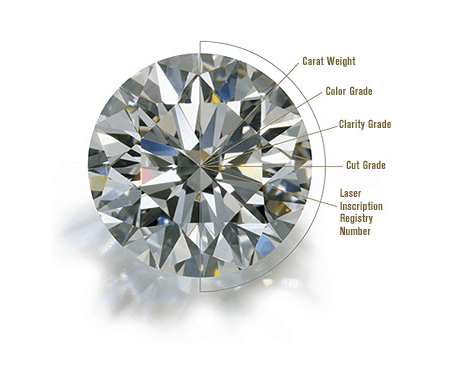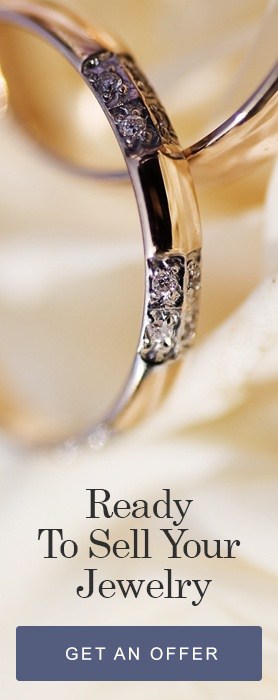.jpg?width=453&name=anne-edgar-119373%20(1).jpg) Naturally formed Pink Diamonds are counted among the rarest and most valuable diamonds available today.
Naturally formed Pink Diamonds are counted among the rarest and most valuable diamonds available today.
One thing is for sure:
Walking out of the store with a sparkly PINK diamond ring is quite different from extracting it from somewhere underneath the surface of the Earth. We all have a general idea about where diamonds come from, but not many know the nitty gritty details of the formation of these precious stones.
When it comes to pink diamonds, this information is relatively new and continues to be oddly mysterious.
While there are many scientific theories surrounding the birth of pink diamonds, final conclusions remain undetermined.
Diamond Formation Vocabulary
.webp?width=240&height=210&name=diamond-6%20(1).webp)
- Crystal Lattice: the symmetrical three-dimensional arrangement of atoms inside of a crystal
- Particulate: relating to or in the form of minute separate particles
- Kimberlite: an ignatius rock which holds diamonds
- Loup: a simple, small magnification device used to see small details more closely
First, let’s talk about the creation of a regular, clear or white diamond.
Get ready to talk science!
All diamonds are formed in the Earth’s mantle, the zone between the earth’s crust and its superheated core. .webp?width=310&height=206&name=pexels-photo-235807%20(1).webp) Within the mantle, atoms of carbon are crushed.
Within the mantle, atoms of carbon are crushed.
Once the temperature reaches 2700 degrees F and pressure exceeds the weight of 4000 adult men, the magic begins.
Crushed carbon = Diamonds.
Diamonds are hosted in a type of rock called kimberlite. Kimberlite transports diamonds as it makes its way to the earth’s surface. It moves through a kimberlite pipe which carries magma as well. Once on the surface, these materials cool and harden.
Diamonds are hidden deep inside of these rocks.
While this process is easy to explain, we still find ourselves blown away by PINK diamonds - magical gifts from below the surface of the earth.
While man-made colored diamonds are processed every day,
Pink Diamonds are 100% natural.
In fact, Colored Diamonds are made in the exact same way as ordinary non-colored diamonds -
with one extraordinary difference.
As a diamond undergoes its creation, sometimes foreign particulates become trapped beneath its surface. As the chemical process is altered during crystallization, the outcome is altered as well.
And just like that,
Colored Diamonds Were Born!
Colored diamonds get their colors based on which minerals and particulates get involved during the crystallization process.
Different minerals and levels of intensity play a role in the outcome of the Diamond Color.
Each situation produces a different Colored Diamond. .webp?width=400&height=268&name=12344252_s-1%20(1).webp)
Now let’s talk colors.
Brown, red, and PINK diamonds all belong to the same family of colors. A combination of intense heat and pressure result in these gorgeous gems. While still within the clutches of the earth, the crystal lattice is disrupted. It is thought that the diamond absorbs green light and reflects a PINK hue.
Still, the Gemological world greatly debates the source of the pink coloring.
There was a point when scientists believed that an impurity was the source of the pink coloring in the diamond.
In order to check, they used a mass spectrometer - a machine that agitates the diamond and analyzes the chemical structure of its atoms.
In English, this means that after a thorough investigation of the pink diamond, no impurities were found.
They also discovered that pink diamonds are not entirely pink - rather they have various zones that alternate between pink and regular clear. This phenomenon causes the entire diamond to look pink.
The most popular theory claims that the coloring of the pink diamond can be attributed to exposure to extraordinary pressure during formation.
Pink diamonds belong to a family of diamonds called Fancy Color Diamonds. This is the general name given to any diamond displaying any type of color.
Assessing the Color of Pink Diamonds .webp?width=286&height=240&name=7046905_s-1%20(1).webp)
All Fancy Color diamonds, including pink diamonds, are assessed according to three things.
- Hue - this refers to the primary and secondary colors
- Saturation - refers to the distribution of color
- Tone - refers to the darkness of the color
The Value of a Pink Diamond
Color
The purer the pink coloring of the diamond, the more the diamond is worth.
Basically, the more intense the pink, the higher the purity, the higher the price. These rules apply to all Fancy Colored diamonds - the more vivid the color, the higher the value of the diamond.
Color intensity is measured on a subscale of 1-10. When assessing a colored diamond, a jeweler or diamond trader may refer to a diamond as “Fancy Vivid” or "Fancy Intense." One may also refer to a colored diamond as a “6” or a “9” based on the most accurate description of the diamond’s color intensity.
Clarity
In order to analyze clarity, all diamonds are examined under a powerful microscope called a loup. Pink diamonds, like all colored diamonds and regular diamonds, are graded on a scale from flawless to included. The goal is to determine whether the diamond has any incisions on the surface or inside.
A mere 7% of pink diamonds are considered high clarity. This is due to the initial formation of pink diamonds in the first place as they are exclusively formed by a deformation.
.webp?width=414&height=162&name=pexels-photo-115567%20(1).webp)
Fun Facts About Pink Diamonds
- A pink diamond can cost up to ten times more than a colorless diamond.
- Australia is the biggest commercial hub for pink diamond mining
- The largest pink diamond weighs 186 carat
While the Argyle mines of Australia deliver the highest quality of the 90-95 percent of pink diamonds found in the commercial world markets, they can also be found in India, South Africa, and Brazil. The closer to an intense red color the diamond is, the more valuable it is considered. In fact, the red diamond is considered to be the rarest of all the colored diamonds.








